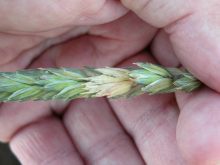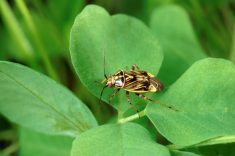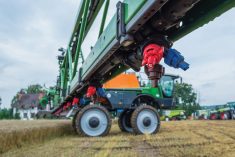Edible bean growers love their desiccants, and for good reason.
The products let them dry their crops down and even them out prior to harvest, make the harvest operation much more manageable and even give a bit of a weed control boost.
So what’s the problem? Residues in a word – likely something that’s being contributed to by the widespread use of a desiccant that doesn’t really fit the category, says University of Guelph bean agronomist Chris Gillard.
“We have a dilemma – we’ve only got four registered products, including (glyphosate),” he explained. “And (glyphosate) is the most popular, but it’s not a desiccant.”
Read Also

CUSMA access key among other trade noise: Seeds Canada panel
Seeds Canada conference panelists say Canada needs to stay focused and wait as U.S. trade and tariff chaos develops, and a Canada-U.S.-Mexico Agreement review looms
Using glyphosate as a desiccant can work, but timing becomes critical both to ensure good dry down and to make sure there’s no residue issue. Applications that are too later are an obvious source of trouble, but Gillard says applications made too early can have an undesired effect. And getting it wrong can have serious ramifications for the industry, he said.
“We had a problem awhile back where beans that exceeded the MRL (maximum residue level) showed up in one of our established markets – and it created a real fuss,” he said.
That’s set the stage for a new push to identify new desiccants that can get the job done with less risk of exceeding MRLs, says Gillard.
The two front-runners are known by the trade names Eragon and Valtera, he said. Both are new lower-residue chemistry and are being tested both alone and in tank mixes with glyphosate.
Both show some promise for desiccation, but early Eragon application appears to affect yield. Both offer good control of pigweed on their own, but require a glyphosate tank mix for lamb’s quarters and foxtail control.
Only the analysis on the Valtera samples has been completed with no MRL issues being revealed. The Eragon samples are still pending analysis, but since the same chemistry in different products hasn’t shown any issues, Gillard isn’t particularly concerned that it will be a problem.
“Based on our experience and what we know already, it shouldn’t be a problem,” he said.



















